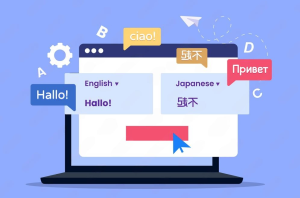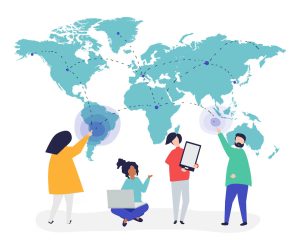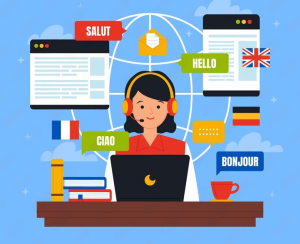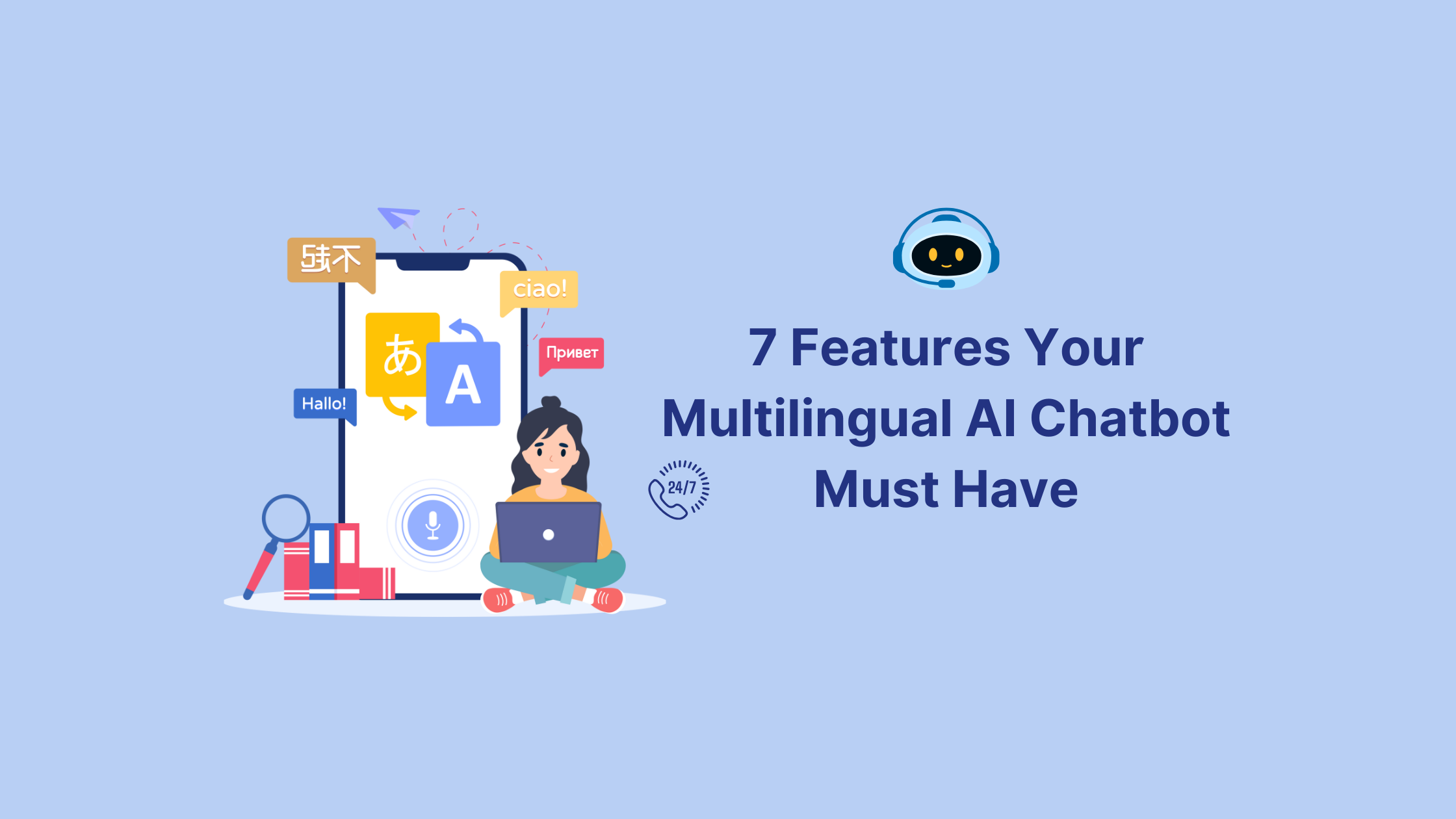Multilingual AI chatbots are essential for businesses entering global markets, enabling meaningful interactions with clients in their preferred languages. However, building an effective chatbot requires more than simple translation. It demands seamless, context-aware interactions that maintain consistency across languages and cultures. Challenges such as ensuring language accuracy, addressing regional nuances, and providing consistent quality across languages can impact customer engagement and brand perception.
To overcome these challenges, multilingual AI chatbots must offer precise language recognition, contextually relevant responses, and cultural adaptability. These features enhance user experiences, build trust, and help businesses thrive in diverse markets.
What is Multilingual AI chatbots

A multilingual chatbot is a virtual assistant designed to communicate in multiple languages. Using Natural Language Processing (NLP) and advanced algorithms, these chatbots can understand, interpret, and respond to user queries accurately, ensuring clear and personalized interactions.
By breaking language barriers, multilingual AI chatbots enable businesses to engage seamlessly with global audiences. They are widely used in industries like e-commerce, travel, healthcare, and customer service to improve user experiences, enhance accessibility, and streamline operations, ultimately boosting customer satisfaction and efficiency.
Common Challenges that Businesses Face without Multilingual AI Chatbots
Without multilingual AI chatbots, organizations will struggle to effectively serve a diverse and global audience. Here are some frequent difficulties they face:
- Limited. Global Reach

Businesses that use a single-language customer care system fail to engage with multinational customers. Language difficulties cause communication gaps, making it harder to build trust and provide effective services in foreign countries.
Customers expect brands to reach them where they are: linguistically and culturally. Organizations that do not use a multilingual AI chatbot can miss opportunities to connect with worldwide audiences, limiting their ability to expand into new areas.
- High costs for multilingual human support
Employing human beings to provide 24/7 assistance in multiple languages is costly and resource-consuming. Businesses find it challenging to scale operations effectively due to the high costs associated with hiring, training, and retaining multilingual staff.
Manual operations not only increase expenses, but also slow response times. Multilingual AI chatbots can greatly cut these costs by automating language-based conversations while maintaining accuracy and efficiency.
- Inconsistent Customer Experience
Human support teams, including multilingual ones, often provide different service quality across locations and languages. Miscommunication, delays, or a lack of cultural knowledge can lead to customer disappointment and affect the brand’s reputation.
A multilingual chatbot maintains constant service quality by providing accurate, consistent, and culturally appropriate interactions to customers no matter what language they speak or the time they approach us.
- Missed Sales and Market Opportunities
Inability to communicate successfully with foreign speakers might lead to lost revenue. Customers are more likely to cancel purchases or switch to competitors if they cannot get support in their language or feel disconnected from the brand.
Localized and customized customer interactions increase conversions. A multilingual chatbot can provide a seamless customer journey by advising customers in their native language and improving the possibility of completing transactions or engaging with the brand.
- Frustrated customers and low retention
Customers who are unable to access services or address issues in their native language frequently feel alone and frustrated. Poor translations or generic responses worsen their experience, resulting in turnover and negative feedback.
Customers who are satisfied with a product or service are more likely to recommend it. A multilingual AI chatbot improves communication, resolves issues faster, and provides a more personalized experience, increasing satisfaction and retention rates.
- Cultural Disconnections
Failure to adjust cultural differences can lead to misunderstandings and even unwanted offense. Tone, phrasing, and etiquette differ by area, and firms that fail to account for these differences risk alienating a diverse audience.
A chatbot with cultural adaptability strengthens connections by respecting local customs and communication styles. This develops trust and portrays the company as a globally accessible brand.
- Operational inefficiencies
Managing multilingual interactions with clients through manual processes or regional teams delays workflows and creates bottlenecks. As the organization grows, scaling such efforts becomes very unfavorable
A multilingual chatbot automates repetitive activities, eliminates delays, and helps organizations to handle large numbers of interactions with customers without overloading resources. This increases productivity and promotes long-term growth.
Why Addressing These Challenges is Essential
Understanding these issues allows firms to discover the benefits of using a multilingual AI chatbot. Such a solution:
- Breaks down language boundaries, allowing for worldwide access.
- Offers continuous, cost-effective client service.
- Improves the customer’s experience through localization and customisation.
- Scales efficiently to meet increasing demand.
These problems highlight the necessity of equipping your multilingual chatbot with the features it needs to overcome obstacles and provide outstanding customer assistance in all languages.
7 key features of Multilingual AI chatbot
A multilingual AI chatbot must go beyond basic translation to provide context aware, culturally sensitive, and consistent conversations. It should be able to handle huge volumes of multilingual discussions. Here are seven crucial elements for effective communication with a global audience.
-
Comprehensive language support

To serve worldwide customers, a multilingual AI chatbot must handle a diverse range of languages, including local languages. It should be able to properly translate and respond to user questions in any language without compromising meaning or context.
For example, YourGPT Chatbot supports over 100 languages, allowing businesses to communicate with customers from different languages. This adequate language proficiency breaks down communication barriers, allowing businesses to confidently grow into international markets.
-
Context-Aware Communication
A chatbot that just translates words without understanding the meaning can give irrelevant or confusing responses. To give relevant and appropriate responses, multilingual AI chatbots need to evaluate the intent of user questions as well as the flow of the discussion.
Context awareness is important when users ask complicated or multilayered inquiries. YourGPT Chatbot, for example, uses advanced natural language processing (NLP) to determine intent, to make sure every interaction is natural and meets the user’s expectations. This makes it particularly useful in areas like e-commerce, tourism, and customer service, where understanding user intent is essential for solving issues.
-
Cultural adaptability
Language alone is not enough; chatbots need to adapt to cultural norms, tones, and communication styles. Customers in Japan, for example, might expect formal responses, but customers in the United States prefer a casual tone.
-
Personalized Interactions across Languages
Personalization is essential for engaging customers to build long-term loyalty. A multilingual AI chatbot’s solutions should be customized based on user choices, previous interactions, and individual requirements. This functionality ensures that the chatbot provides customized services for each customer, irrespective of the language they use.
-
Integrated Language Recognition and Switching
In multilingual localities or with bilingual customers, users can switch between languages throughout a conversation. A multilingual chatbot must identify and adapt to language changes in real time while maintaining the flow of the discussion.
For example, a customer can start a query in English and then switch to Spanish for specific terms or phrases. AI chatbot with seamless language understanding can easily change, making the interaction easy and hassle-free. This capability is particularly helpful in multilingual markets, where consumers often combine languages.
-
Scalability for Global Growth
As organizations grow, so does the number of client interactions, which increases the need for different language support. A scalable chatbot can manage larger numbers of requests while also supporting new languages as needed, all without sacrificing speed.
-
Seamless integration

Seamless integration means that your chatbot delivers consistent service across all platforms, such as your website, mobile app, and social media. By integrating with technologies such as CRMs, payment platforms, and e-commerce systems, the chatbot gains real-time access to boost productivity and simplify procedures.
For example, YourGPT chatbot seamlessly interacts with platforms like WhatsApp, Telegram, and your website, resulting in a consistent experience across all channels. Whether clients contact you through Instagram, your website, or a mobile app, they will receive the same high-quality service.
Why Multilingual AI Chatbots Matter for Global Success
Multilingual AI chatbots are essential for businesses aiming to interact with a wide range of international audiences. By eliminating language barriers, these chatbots enable businesses to engage with clients from multiple locations without the need for multilingual staff. Offering particular and accessible experiences builds trust, improves communication, and increases consumer loyalty.
These chatbots also improve operational efficiency by handling common queries in multiple languages at once. This allows human agents to focus on more complicated issues, increasing overall efficiency. Multilingual AI chatbots are available 24 hours, in any time zone, improving reliability and satisfaction. Consistent service improves the customer experience and builds the brand’s reputation in multiple locations.
Furthermore, multilingual AI chatbots are intended to scale as businesses grow. They can seamlessly incorporate new languages and platforms, reducing the need for additional multilingual staff. These chatbots offer a cost-effective growing option by automating procedures, reducing operational expenses, and connecting with clients in various kinds of cultural contexts, to ensure long-term success in a global market.
Conclusion
Investing in a multilingual AI chatbot provides major advantages for businesses trying to reach a worldwide audience. By overcoming challenges like language barriers, cultural variations, and high operational expenses, chatbots enable businesses to provide consistent, personalized, and effective customer service in multiple languages. This leads to higher customer satisfaction, brand trust, and loyalty, all of which help the company expand into new areas and create new opportunities.
Organizations that use multilingual AI chatbots can expand their operations, maintain clients, and promote growth while maintaining good service quality across all locations. This solution promotes long-term success by improving both the customer experience and operational efficiency.
FAQ’s
- How can multilingual AI chatbots provide 24-7 availability?
They use automated methods to offer uninterrupted service all times, irrespective of time, providing constant support to worldwide customers.
- Can multilingual AI chatbots handle voice and text communication?
Yes, they provide both voice and text communication, allowing users to communicate in the way that suits them best. This offers a smooth and convenient experience for a wide range of audiences.
- What industries benefit the most from multilingual AI chatbots?
Industries including e-commerce, healthcare, travel, education, and customer service benefit significantly. These industries often interact with diverse and international customers, which requires multilingual interactions.
- Why are multilingual AI chatbots important for companies?
Multilingual AI chatbots are important for breaking down language barriers, simplifying communication, and improving customer experiences. They increase participation in global markets and provide 24/7 assistance to increase productivity and satisfaction.
- Are these chatbots cost effective?
Yes, multilingual AI chatbots eliminate the need to hire and train multilingual employees which reduce operating costs, and offer a scalable solution for worldwide customer interaction.


Leave a Reply